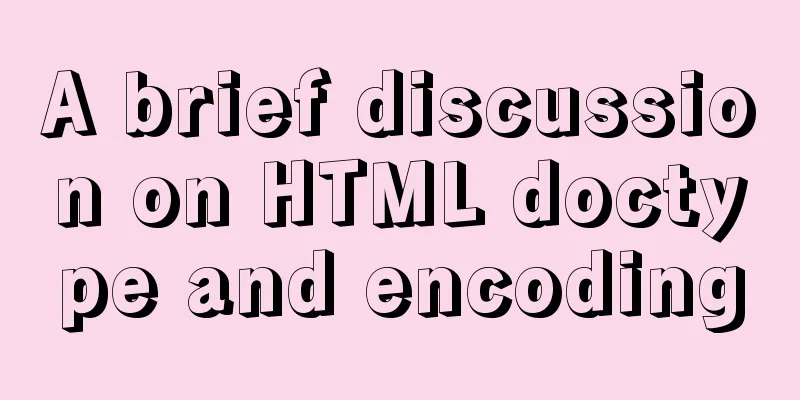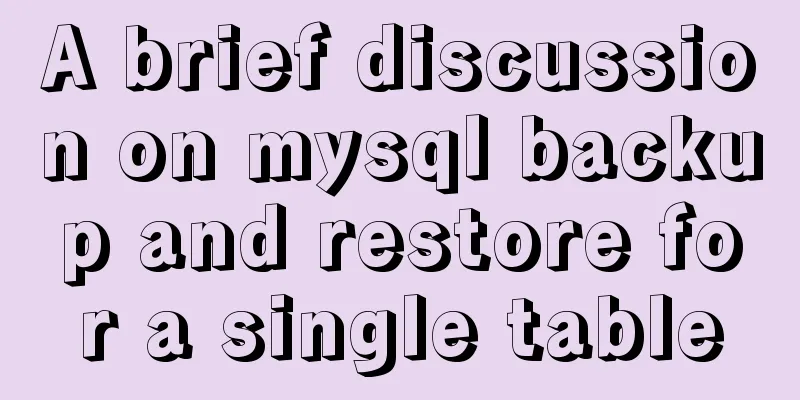Detailed explanation of JS browser event model

What is an eventI think you may have heard of event-driven, but what exactly is event-driven? Why is the browser event-driven? In simple terms, event-driven means that everything is abstracted into events.
The browser relies on events to drive the APP to run. If there is no event-driven, the APP will run directly from beginning to end and then end. Event-driven is the cornerstone of the browser. A Simple ExampleIn fact, the traffic light in reality is a kind of event. It tells us whether it is in the red light state, green light state, or yellow light state. We need to complete some operations based on this event. For example, we need to wait for red and yellow lights, and we can cross the road when the light is green. Let's take a look at the simplest browser event: HTML code: <button>Change color</button> js code:
var btn = document.querySelector('button');
btn.onclick = function() {
console.log('button clicked')
}The code is very simple. We register an event on the button. The handler of this event is an anonymous function we defined. When the user clicks the button that has been registered for the event, the anonymous function we defined will be executed. How to bind eventsWe have three ways to bind events: inline binding, direct assignment, and using addEventListener. Inlining this method is highly not recommended HTML code: <button onclick="handleClick()">Press me</button> Then write in the script tag:
function handleClick() {
console.log('button clicked')
}Direct assignment Just like the example I gave above:
var btn = document.querySelector('button');
btn.onclick = function() {
console.log('button clicked')
}This approach has two disadvantages You cannot add multiple handlers of the same type. btn.onclick = functionA; btn.onclick = functionB; This way only functionB is valid, which can be solved by addEventListener. It is not possible to control at which stage the execution will take place. This will be discussed later when capturing/bubbling events. This can also be solved by addEventListener. Therefore, addEventListener was born, which is also the currently recommended way of writing. addEventListener The third parameter of the old version of addEventListener is bool, while the third parameter of the new version is object, which is convenient for subsequent expansion and carries more functions. Let's focus on it. addEventListener can bind events to Element, Document, Window, and even XMLHttpRequest. When the specified event occurs, the bound callback function will be executed by a certain mechanism, which we will talk about later. grammar: target.addEventListener(type, listener[, options]); target.addEventListener(type, listener[, useCapture]); target.addEventListener(type, listener[, useCapture, wantsUntrusted ]); // Gecko/Mozilla only type is the event type you want to bind, common ones are click, scroll, touch, mouseover, etc. The third parameter of the old version is bool, indicating whether it is the capture phase. The default is false, that is, the default is the bubbling phase. The new version is an object that contains capture (same functionality as above), passive and once. Once is used to determine whether to execute only once. If passive is specified as true, preventDefault() will never be executed, which is important in achieving smooth scrolling effects. For more information, see Improving scrolling performance with passive listeners. Events in the frameworkIn fact, we now use frameworks to write code in most cases, so the above situation is actually very rare in reality. We often see events encapsulated by frameworks, such as react's synthetic events. If you are interested, you can read these articles.
Although we rarely come into contact with native events, it is still necessary to understand event objects, event mechanisms, event agents, etc., because the framework's event system is at least consistent in this respect, which we will talk about next. Event ObjectAll event handling functions are accompanied by an event object when executed by the browser. For example:
function handleClick(e) {
console.log(e);
}
btn.addEventListener('click', handleClick);This e is the event object. This object has some very useful properties and methods. Here are some commonly used properties and methods. property
method
Event PropagationAs mentioned earlier, events are bound to the bubbling phase by default. If you explicitly set useCapture to true, they will be bound to the capture phase. Event capture is very interesting, so much so that I often ask questions about events and add some event propagation mechanisms, and ask candidates to answer them. This can really reflect a person's level. Understanding the propagation mechanism of events is very helpful for some specific problems. When an event bound to an Element is triggered, it actually goes through three stages. Phase 1 - Capture Phase Starting from the outermost layer, i.e. the HTML tag, check whether the current element has a corresponding capture phase event bound to it. If so, execute it; if not, continue to propagate inside. This process is executed recursively until the element that triggers the event is reached. pseudocode:
function capture(e, currentElement) {
if (currentElement.listners[e.type] !== void 0) {
currentElement.listners[e.type].forEach(fn => fn(e))
}
// pass down
if (currentElement !== e.target) {
// getActiveChild is used to obtain the child node capture(e, getActiveChild(currentElement, e)) on the current event propagation link
} else {
bubble(e, currentElement)
}
}
// This Event object is created by the engine capture(new Event(), document.querySelector('html'))Second stage - target stage This has been mentioned above and is omitted here. The third stage - bubbling stage Starting from the element that triggers this event, check whether the current element has a bound corresponding bubbling stage event. If so, execute it; if not, continue to propagate it. This process is recursively executed until the HTML is reached. pseudocode:
function bubble(e, currentElement) {
if (currentElement.listners[e.type] !== void 0) {
currentElement.listners[e.type].forEach(fn => fn(e))
}
// returning
if (currentElement !== document.querySelector('html')) {
bubble(e, currentElement.parent)
}
}The above process is represented by a diagram:
If you don't want the event to continue bubbling, you can use the stopPropagation I mentioned earlier. pseudocode:
function bubble(e, currentElement) {
let stopped = false;
function cb() {
stopped = true;
}
if (currentElement.listners[e.type] !== void 0) {
currentElement.listners[e.type].forEach(fn => {
fn({
...e,
stopPropagation: cb
});
if (stopped) return;
})
}
// returning
if (currentElement !== document.querySelector('html')) {
bubble(e, currentElement.parent)
}
}Event DelegationUsing the event bubbling mechanism mentioned above, we can choose to do some interesting things. For example: We have a list like the following, and we want to output which element was clicked when clicking the corresponding list item. HTML code:
<ul>
<li>1</li>
<li>2</li>
<li>3</li>
<li>4</li>
</ul>JS code:
document.querySelector('ul').addEventListener('click', e => console.log(e.target.innerHTML))Online address, as mentioned above, addEventListener will be bound to the bubbling stage by default, so the event will start from the target stage and bubble to the outer layer to the ul to which we bound the event. In ul, we can get which element triggered it through the target attribute of the event object. "The event will start from the target phase" does not mean that the event has no capture phase, but that we did not bind the capture phase, so I omitted it in the description. We only bind the event handling function to the outer ul, but you can see that when the li is clicked, the corresponding li content (1, 2, 3 or 4) will actually be printed. We don't need to bind an event handling function to each li, which not only improves the amount of code but also the performance. We gave this interesting thing a nice name "event proxy". We will often use this technique in actual business, and it is also a high-frequency test point in interviews. SummarizeEvents are not browser-specific and have nothing to do with the JS language, which is why I did not classify them into the JS section. There are event systems in many places, but the event models are not consistent. What we are talking about today is the browser's event model. The browser is event-driven and abstracts many things into events, such as user interaction, network requests, page loading, errors, etc. It can be said that events are the cornerstone of the normal operation of the browser. The frameworks we use all encapsulate and process events to varying degrees. In addition to understanding native events and principles, it is sometimes necessary to understand how the framework itself handles events. When an event occurs, the browser will initialize an event object and then propagate the event object according to a certain logic. This logic is the event propagation mechanism. We mentioned that event propagation is actually divided into three stages, which are the capture stage, the target stage and the bubbling stage in chronological order. Developers can choose to monitor different stages to achieve the desired effect. The event object has many properties and methods that allow you to read and operate in the event processing function, such as reading the coordinate information of the click, preventing bubbling, etc. Finally, we use an example to illustrate how to use the bubbling mechanism to implement event delegation. The above is a detailed explanation of the JS browser event model. For more information about the JS browser event model, please pay attention to other related articles on 123WORDPRESS.COM! You may also be interested in:
|
<<: Detailed explanation of the functions and usage of MySQL common storage engines
>>: Redission-tomcat quickly implements deployment from single machine to multi-machine deployment
Recommend
Detailed explanation of Nginx timed log cutting
Preface By default, Nginx logs are written to a f...
JavaScript implements a box that follows the mouse movement
This article shares the specific code of JavaScri...
JavaScript implements draggable modal box
This article shares the specific code of JavaScri...
CSS style does not work (the most complete solution summary in history)
When we write pages, we sometimes find that the C...
Detailed explanation of Nginx configuration required for front-end
Nginx (engine x) is a lightweight, high-performan...
Implementation of MySQL multi-version concurrency control MVCC
Transaction isolation level settings set global t...
CentOS7 installation zabbix 4.0 tutorial (illustration and text)
Disable SeLinux setenforce 0 Permanently closed: ...
Example analysis of the use of GROUP_CONCAT in MySQL
This article uses an example to describe how to u...
Five ways to achieve automatic page jump in HTML
In the previous article, we introduced three comm...
VMware 15.5 version installation Windows_Server_2008_R2 system tutorial diagram
1. Create a new virtual machine from VMware 15.5 ...
Docker MQTT installation and use tutorial
Introduction to MQTT MQTT (Message Queuing Teleme...
CSS achieves the effect of changing the color of the entire line when the mouse is placed on it
summary: The following is a method for changing t...
How to change the Ali source in Ubuntu 20.04
Note that this article does not simply teach you ...
Using js to achieve waterfall effect
This article example shares the specific code of ...
How to solve the problem of installing VMware tools under VMware and the installation file not appearing
VMware tools provides great convenience for using...










